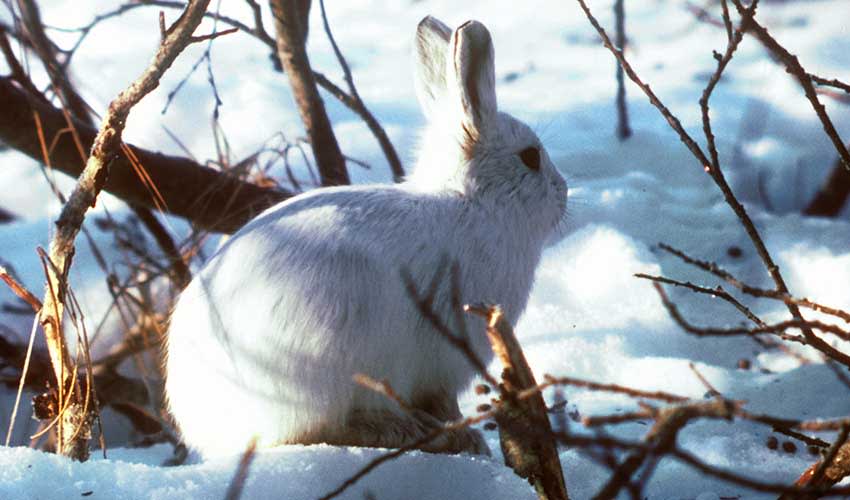One of the largest hares in North America, and it is a true specialist of the far north. Found only in western and southwestern Alaska, this hare lives in treeless tundra and open country, where conditions are harsh and winters are long. It is well adapted to these environments, with powerful legs built for bounding across open ground, a dense coat for insulation, and a stocky, muscular build compared to many of its relatives. Their fur changes color with the seasons: in summer, it is grayish-brown to blend with tundra plants and bare earth, and in winter, it shifts to a snowy white, helping them disappear against the frozen landscape. This seasonal camouflage is one of their most important survival strategies in a land where predators are always on the lookout.
Unlike some smaller hares and rabbits that rely heavily on hiding, Alaskan hares are built for speed and endurance. They can make powerful leaps and run in long, fast bursts across open ground to escape predators like eagles, foxes, or wolves. Their size also allows them to dig through snow to find food during the winter months, which often consists of twigs, buds, mosses, and lichens. In the brief arctic summer, they take advantage of the lush growth of grasses and flowering plants. Because of the wide-open spaces they inhabit, they rely less on dense cover and more on sharp eyesight and speed to stay alive.
Behaviorally, the Alaskan hare is solitary for much of the year, but during the short breeding season in spring, males may compete for females in dramatic chases and boxing matches—behaviors that are common among hares. Females give birth to litters of well-developed young, called leverets, which are born fully furred and with their eyes open. This is an important adaptation in the tundra, where nests cannot be easily concealed.
Distribution
 United States
United StatesAnything we've missed?
Help us improve this page by suggesting edits. Glory never dies!
Suggest an editGet to know me
Terrestrial / Aquatic
Altricial / Precocial
Polygamous / Monogamous
Dimorphic (size) / Monomorphic
Active: Diurnal / Nocturnal
Social behavior: Solitary / Pack / Herd
Diet: Carnivore / Herbivore / Omnivore / Piscivorous / Insectivore
Migratory: Yes / No
Domesticated: Yes / No
Dangerous: Yes / No




